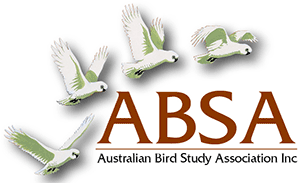Foraging areas and habitat utilisation of Bulloo Grey Grasswrens (Amytornis b. barbatus) in Narriearra-Caryapundy Swamp National Park, north-western New South Wales
| Posted: |
14/09/2023 |
| Author(s): |
Jeff Hardy, John Farrell, Michael Franklin, Rebecca Jacobs, Rudy Jacobs |
The threatened Bulloo Grey Grasswren (Amytornis b. barbatus) was studied over a 6-year period in the ephemeral flood channels of the Bulloo River system, within the Narriearra-Caryapundy Swamp National Park, NSW. Building on earlier work, this study aimed to better delineate the size of foraging areas and determine the vegetation communities in which these birds forage and roost. VHF radio tracking was used to obtain multiple point locations for each of 13 individual birds, through time. These were used to estimate the size of individual foraging areas. Vegetation communities were mapped over orthomosaics generated from drone-captured images. Bird point locations were then plotted over vegetation communities to assess habitat utilisation. Roosting and foraging occurred primarily within Lignum thickets (52.6%), and birds foraged in Old Man Saltbush (30.6%), Swamp Canegrass (5.6%) and mixed Old Man Saltbush/Swamp Canegrass (11.2%) communities. The average adult Grey Grasswren foraging area (43.7 ha) far exceeded those published for congeners. The size of the average male foraging area (61.9 ha) was much larger than females (34.6 ha). Males also made the longest movements within a day, suggesting that males may be more nomadic within their limited habitat than females. In 2022, a pair of tracked females was found to remain with a juvenile bird for 19 days, highlighting the need for further investigation into group dynamics and possibly cooperative breeding in this species. This species
requires large areas of flood channel containing multiple vegetation communities for long-term persistence.
>> Download Abstract |
File Size: 220 KB
>> Download Complete PDF | File Size: 2 MB
